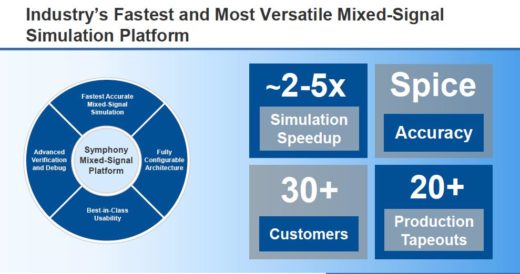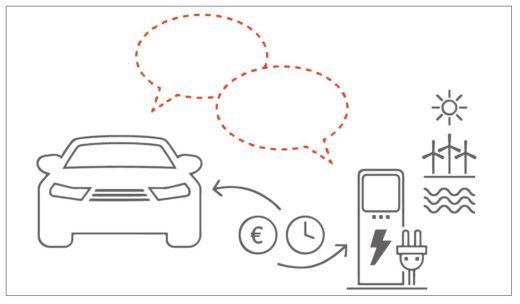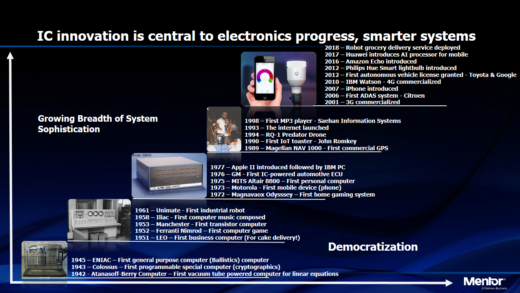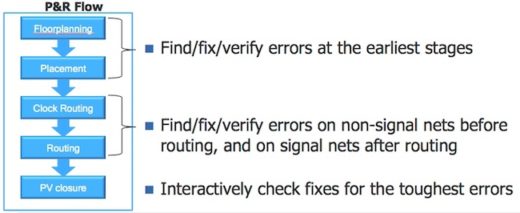Article Roundup: Mixed Signal Simulation, Public EV Charging, Digital Twins for Smarter Systems, Qualcomm’s P&R Fix & Domain Crossing’s Impact on Safety
- Mentor’s Symphony in Tune with AMS Designer Needs
- Streamlining Public EV Charging
- The Era of Smarter Systems Demands Functionally Accurate Digital Twins
- Case study: Achieving earlier signoff convergence and a ‘shift left’ for P&R at Qualcomm
- The Impact Of Domain Crossing On Safety
Mentor’s Symphony in Tune with AMS Designer Needs
SemiWiki
 Modern SoC designs contain a growing number of analog blocks. Along with the drive for lower power and the addition of sensors, the increase in analog block usage highlights the need for faster and more accurate mixed signal simulation. This article covers a new solution from Mentor that combines the leading analog simulator with any digital simulator for the fastest and most versatile mixed-signal platform in the industry.
Modern SoC designs contain a growing number of analog blocks. Along with the drive for lower power and the addition of sensors, the increase in analog block usage highlights the need for faster and more accurate mixed signal simulation. This article covers a new solution from Mentor that combines the leading analog simulator with any digital simulator for the fastest and most versatile mixed-signal platform in the industry.
Streamlining Public EV Charging
SemiEngineering
 What will it take to achieve wide-spread electric vehicle (EV) adoption? One step is to simplify the process of charging at public stations that often require unique authentication cards before customers can begin recharging. Telemotive intelligent charging (TIC) achieves this by turning the charging cable into a data transmission line between car and station, enabling authentication, payment, and other features to be carried out much more quickly and easily than before.
What will it take to achieve wide-spread electric vehicle (EV) adoption? One step is to simplify the process of charging at public stations that often require unique authentication cards before customers can begin recharging. Telemotive intelligent charging (TIC) achieves this by turning the charging cable into a data transmission line between car and station, enabling authentication, payment, and other features to be carried out much more quickly and easily than before.
The Era of Smarter Systems Demands Functionally Accurate Digital Twins
EE Times
 The coming age of smart and connected devices, cars, factories, and infrastructure requires increasingly complex ICs that incorporate artificial intelligence, sensors, and communications. It is imperative to verify the safety of these systems, both during normal operation and during failures. This article examines how functionally accurate digital twins of these systems are necessary to ensure these goals are met.
The coming age of smart and connected devices, cars, factories, and infrastructure requires increasingly complex ICs that incorporate artificial intelligence, sensors, and communications. It is imperative to verify the safety of these systems, both during normal operation and during failures. This article examines how functionally accurate digital twins of these systems are necessary to ensure these goals are met.
Case study: Achieving earlier signoff convergence and a ‘shift left’ for P&R at Qualcomm
Tech Design Forum
 Qualcomm was experiencing delays in achieving P&R sign-off due to DRC errors from late stage IP integration, incorrect or unintended metal fixes, and standard cell interface errors. To help, Qualcomm adopted Calibre RealTime Digital, which analyzes P&R layouts with foundry-approved DRC sets and displays violations graphically, directly in the layout environment. This article examines Qualcomm’s objectives and results with the solution.
Qualcomm was experiencing delays in achieving P&R sign-off due to DRC errors from late stage IP integration, incorrect or unintended metal fixes, and standard cell interface errors. To help, Qualcomm adopted Calibre RealTime Digital, which analyzes P&R layouts with foundry-approved DRC sets and displays violations graphically, directly in the layout environment. This article examines Qualcomm’s objectives and results with the solution.
The Impact Of Domain Crossing On Safety
SemiEngineering
 Domain crossings in SoCs are increasing, creating the potential for a number of problems in the transfer of data between domains. In part three, five experts, including Mentor’s Joe Hupcey, discuss the impact of domain crossings on safety-critical applications, such as automotive. You can read more about domain crossing issues in parts one and two.
Domain crossings in SoCs are increasing, creating the potential for a number of problems in the transfer of data between domains. In part three, five experts, including Mentor’s Joe Hupcey, discuss the impact of domain crossings on safety-critical applications, such as automotive. You can read more about domain crossing issues in parts one and two.